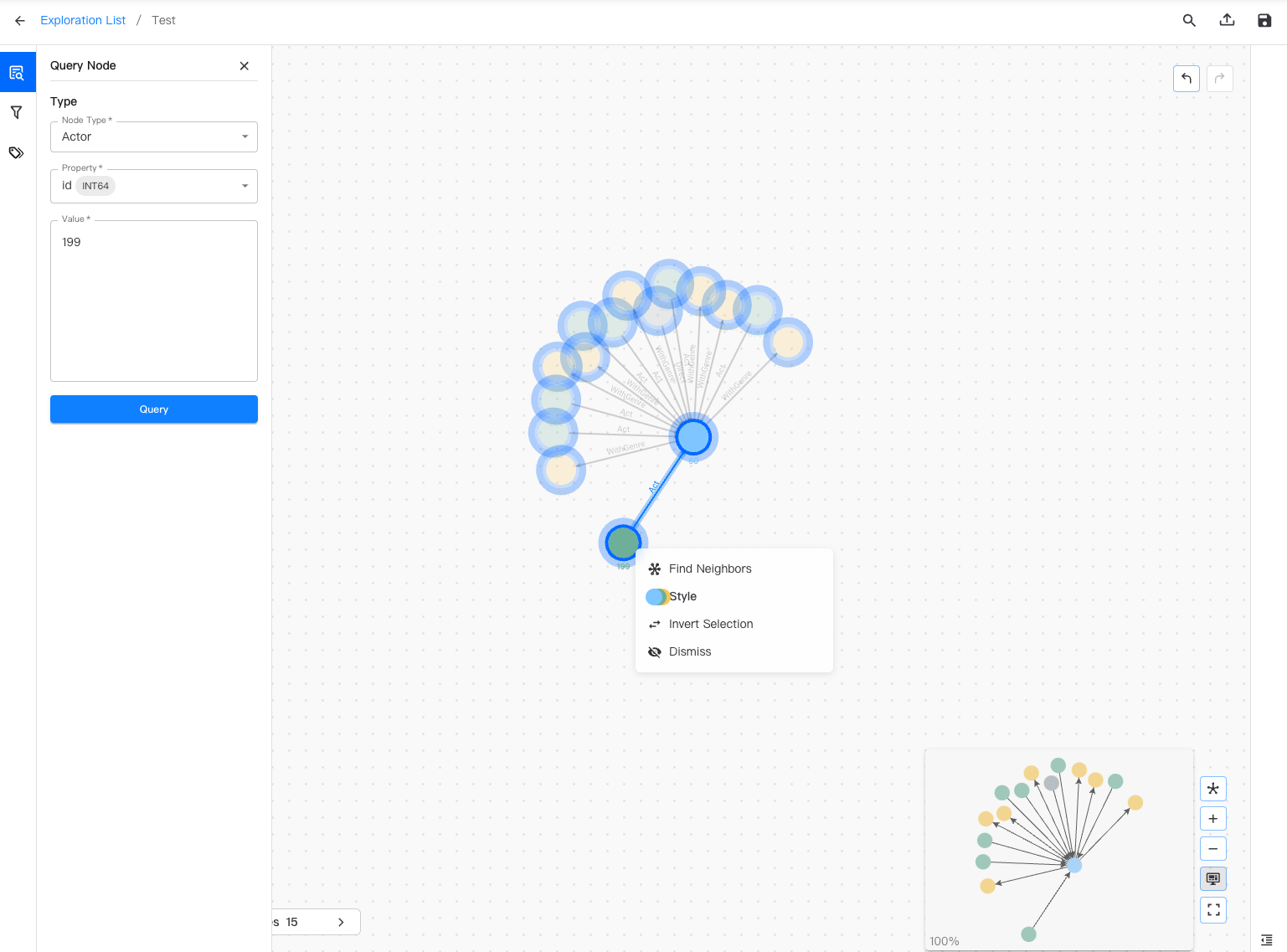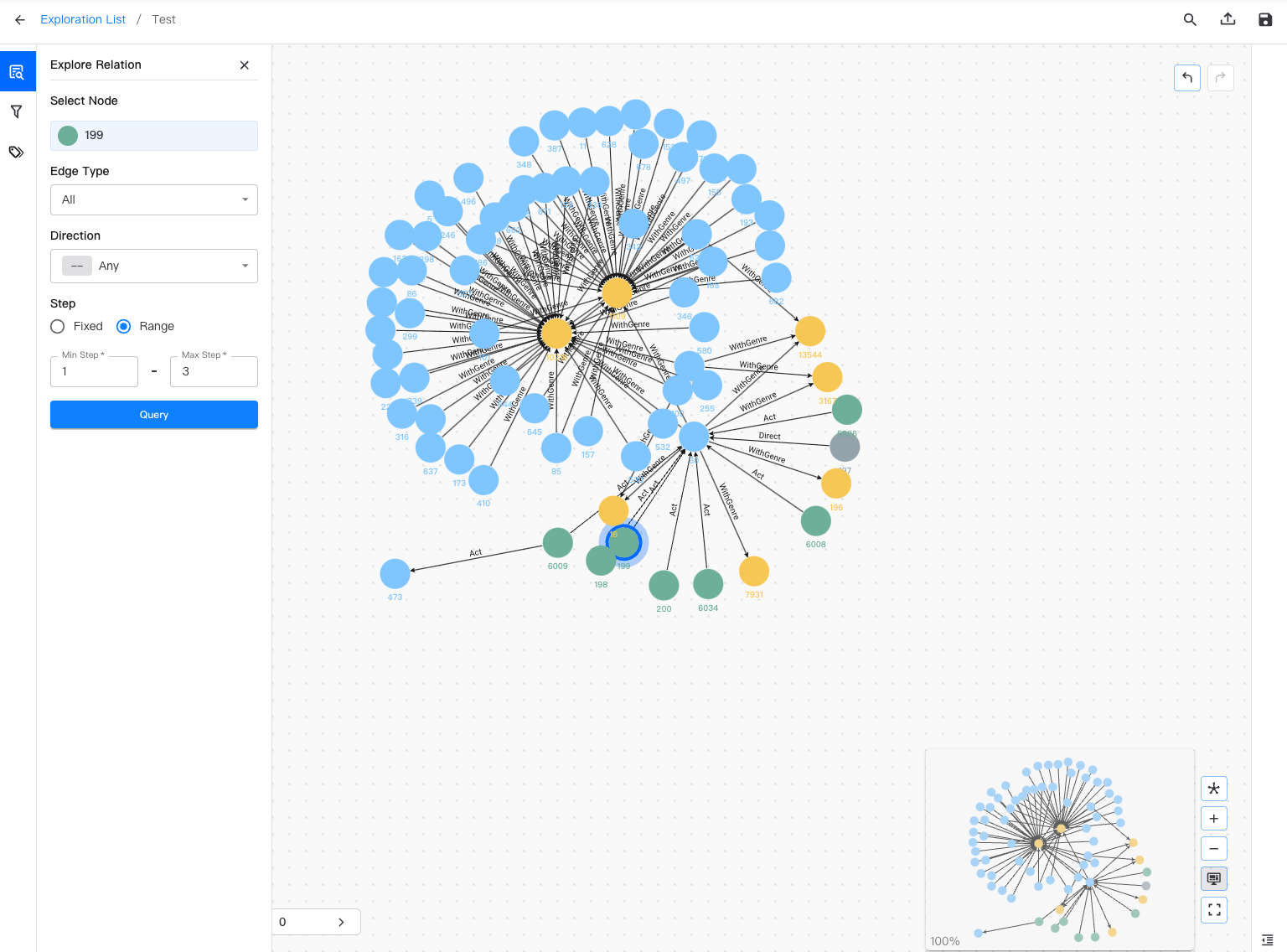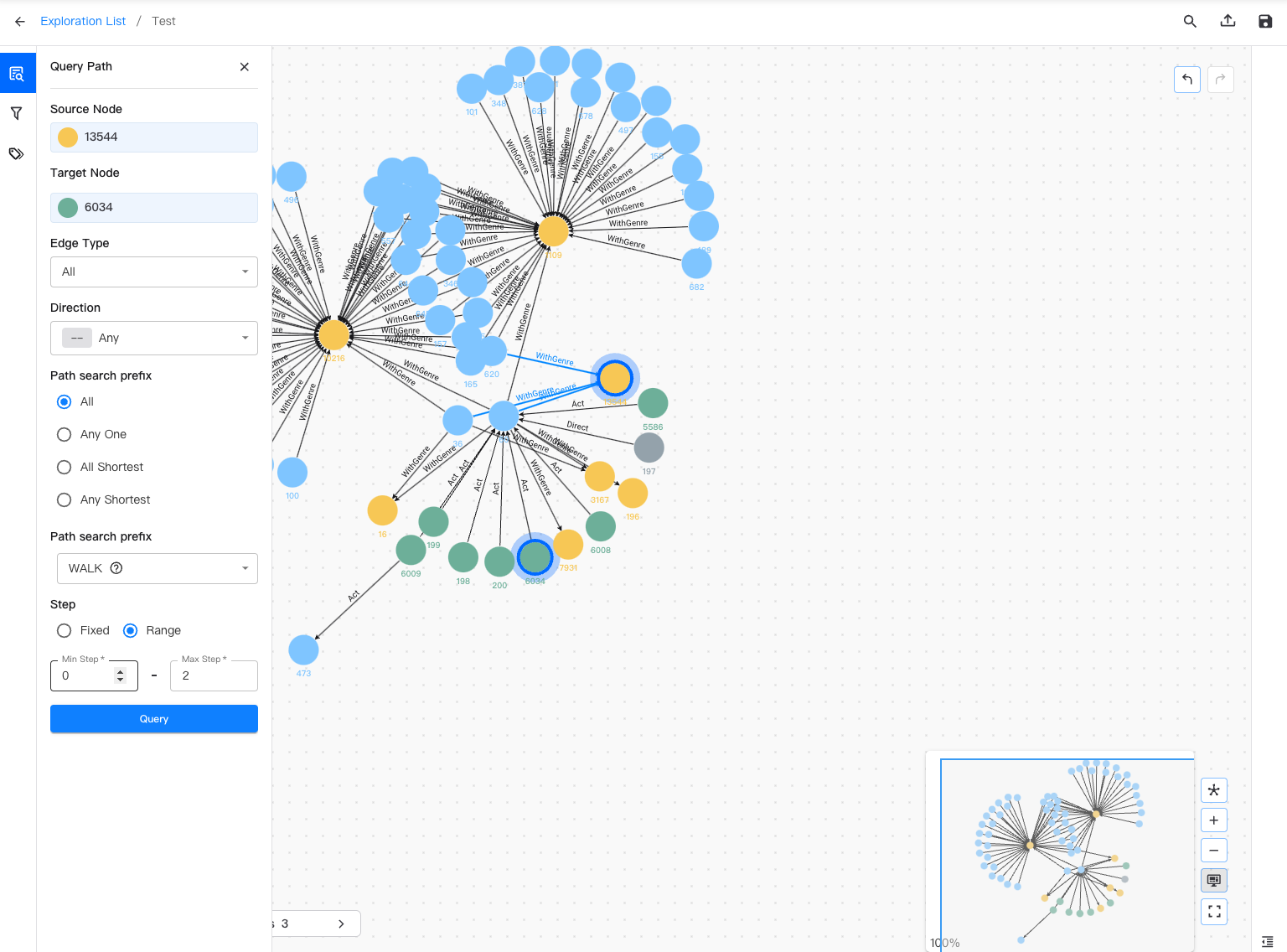Explore subgraphs¶
This topic introduces how to explore subgraphs in NebulaGraph Cloud.
Prerequisites¶
- An exploration is created. For more information, see Manage explorations.
- To perform the operations in this topic, you must be granted related roles. For more information, see Account user management.
Query nodes¶
Required role: Project Admin or Project Member
- In NebulaGraph Cloud, switch to the project you want to use, and click the name of the database to view the database details.
- On the left-side navigation pane of the database details page, click Explore under Data.
- On the Exploration List page, click the exploration that you want to use.
- On the left-side pane, click the Graph Query icon.
-
On the expanded pane that appears, click Query Nodes and specify the following information:
- Node Type: Select the type of nodes that you want to query.
- Property: Select the property of the node type.
- Value: Enter the value of the property. To query multiple nodes, specify multiple values separated by newlines.
-
Click Query. The nodes that meet the query conditions are selected in highlight on the canvas.
-
To explore further, select one or more nodes on the canvas and right-click to perform the following operations:
- Find Neighbors: Find the neighbors of the selected nodes.
- Style: Change the style of the selected nodes.
- Invert Selection: Invert the selection of the nodes.
- Dismiss: Dismiss the selected nodes so that they are grayed out on the canvas.
Explore relations¶
Required role: Project Admin or Project Member
- In NebulaGraph Cloud, switch to the project you want to use, and click the name of the database to view the database details.
- On the left-side navigation pane of the database details page, click Explore under Data.
- On the Exploration List page, click the exploration that you want to use.
- On the left-side pane, click the Graph Query icon.
-
On the expanded pane that appears, click Explore Relation and specify the following information:
- Select Node: Select one or more nodes that you want to explore on the canvas.
- Edge Type: Select the types of edges that connect the nodes from the drop-down list.
- Direction: Select the direction of the edges from the drop-down list.
- Step: Specify the number of steps to explore. The following options are available:
- Fixed: Specify a fixed number of steps.
- Range: Specify a range of steps.
-
Click Query. The nodes and edges that meet the query conditions are selected in highlight on the canvas.
Query paths¶
Required role: Project Admin or Project Member
- In NebulaGraph Cloud, switch to the project you want to use, and click the name of the database to view the database details.
- On the left-side navigation pane of the database details page, click Explore under Data.
- On the Exploration List page, click the exploration that you want to use.
- On the left-side pane, click the Graph Query icon.
-
On the expanded pane that appears, click Query Path and specify the following information:
- Source Node: Select the source node of the path on the canvas.
- Destination Node: Select the destination node of the path on the canvas.
- Edge Type: Select the types of edges that are allowed in the path from the drop-down list.
- Direction: Select the direction of the edges that are allowed in the path from the drop-down list.
- Path Search Prefix: Select the path search prefix. The following options are available:
- All: Query all paths that match the pattern.
- Any One: Query any path that matches the pattern.
- All Shortest: Query all the shortest paths that match the pattern.
- Any Shortest: Query any shortest path that matches the pattern.
- Path Mode: Select the path mode from the drop-down list. The following options are available:
- WALK: Applies no filtering to the paths. This is the default path mode.
- TRAIL: Filters out paths with repeated edges.
- ACYCLIC: Filters out paths with repeated nodes.
- SIMPLE: Filters out paths with repeated nodes unless these nodes are either the first or last nodes in the path.
- Step: Specify the number of steps to explore. The following options are available:
- Fixed: Specify a fixed number of steps.
- Range: Specify a range of steps.
-
Click Query. The paths that meet the query conditions are selected in highlight on the canvas.


